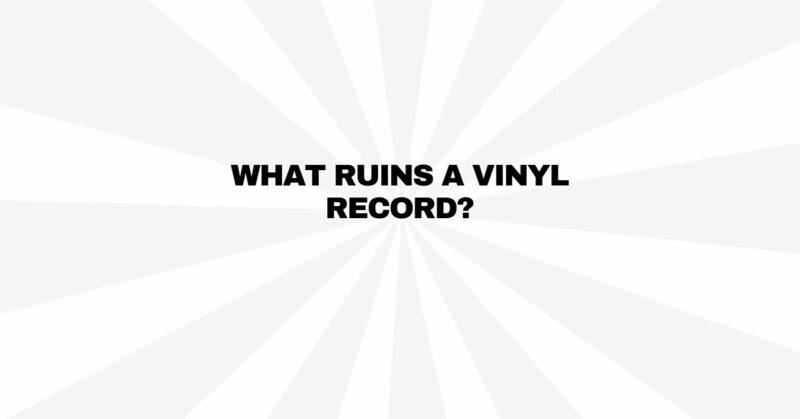Vinyl records, with their warm, analog sound and nostalgic appeal, have enjoyed a resurgence in popularity in recent years. Whether you’re a dedicated audiophile or a casual collector, understanding what can ruin a vinyl record is crucial to maintaining the quality and longevity of your cherished music collection. In this comprehensive guide, we will explore the various factors and practices that can lead to the deterioration and damage of vinyl records.
1. Physical Damage:
Vinyl records are susceptible to physical harm, and mishandling is one of the most common ways they can be ruined. Here are some physical factors that can damage vinyl records:
- Scratches: Surface scratches can occur if a record is mishandled or improperly stored. These scratches can cause pops and crackles during playback.
- Warping: Exposure to heat or uneven pressure can lead to warping, where the record loses its flat shape. Warped records may skip or have tracking issues on the turntable.
- Cracks and Breaks: Dropping a vinyl record can result in cracks or breaks, rendering it unplayable.
2. Dust and Dirt:
Dust and dirt are natural enemies of vinyl records. When dust settles on the grooves, it can create pops and crackles during playback. Additionally, dust can lead to static electricity buildup, attracting more particles and potentially causing further damage.
3. Mold and Mildew:
Exposure to high humidity can promote the growth of mold and mildew on vinyl records. These microorganisms can penetrate the grooves and affect sound quality. Proper storage in a controlled environment is essential to prevent mold and mildew growth.
4. Poor Handling:
Improper handling practices can damage vinyl records over time. Here’s what to avoid:
- Touching the Grooves: Handling records by the grooved playing surface can leave fingerprints and transfer oils from your skin, leading to sound quality degradation.
- Stacking Records Horizontally: Stacking records horizontally for extended periods can cause warping due to the weight of the records on top.
5. Exposure to Heat and Sunlight:
Vinyl records should be stored in a cool, dark place. Exposure to direct sunlight or extreme heat can cause warping and fading of album covers.
6. Cheap or Misaligned Turntable Equipment:
Using low-quality or misaligned turntable equipment can damage records over time. A poorly aligned stylus or improper tracking force can wear down the grooves faster and lead to sound quality degradation.
7. Inner Sleeve Damage:
Paper inner sleeves can cause scratches if records are not carefully inserted and removed. Switching to anti-static polyethylene or polypropylene inner sleeves can help prevent this type of damage.
8. Excessive Playback and Needle Wear:
Overplaying records with a worn-out or dirty needle can accelerate groove wear and affect sound quality. Regular needle maintenance and proper cleaning of both records and stylus are essential.
9. Chemical Exposure:
Contact with chemicals, such as household cleaning products or adhesive labels, can damage the vinyl and its label.
10. Water Damage:
Spills or exposure to water can warp records and ruin album covers. It’s crucial to keep records dry and away from areas prone to water damage.
11. Poor Storage Conditions:
Improper storage conditions, including high humidity, extreme temperatures, and inadequate ventilation, can lead to the degradation of both the vinyl and album covers.
12. Neglect and Negligence:
Leaving records out in the open or stacked haphazardly can lead to damage over time. Proper storage and care are essential for preserving vinyl records.
Conclusion:
Vinyl records are delicate analog treasures that require care and attention to maintain their sound quality and longevity. Understanding what can ruin a vinyl record and implementing best practices for handling, storage, and maintenance are key to ensuring that your vinyl collection remains a source of joy and nostalgia for years to come. By treating your records with respect and following the guidelines outlined in this guide, you can continue to enjoy the warm, analog magic of vinyl for generations.


